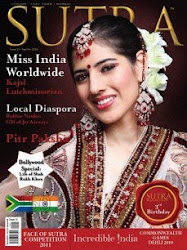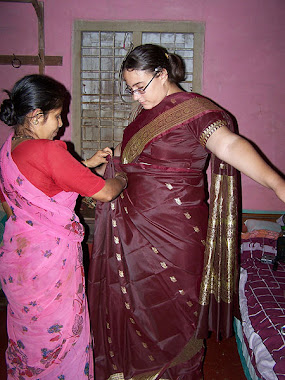
Thursday, September 30, 2010
Tuesday, September 28, 2010
The uniqueness of Indian food and its value to your health
Indian food is unique and different from other foods. The difference is not in the taste only but is also in the methods used to prepare the dishes. Indian food shows a perfect intermix of diverse cultures and age. If you would like to taste real Indian food it is advisable to taste it at an Indian home, instead of at a restaurant. This is so because Indian food differs according to a state, and also according to communities within the same state. Indian food has also been affected by various cultures and changing times just like other elements of the culture like clothes. Indian food is well known for its spiciness. If you eat at a wealthy Indian family’s place or an educated Indian's home, it may not be very different from the western way. All the same, in a conservative Indian house, one may be required to sit in a cross-legged, yogis tic pose on the floor and eat with the right hand from a banana leaf. It is a common tradition in these Indian families to leave their shoes outside the door to the house.
There are many vegetarian & non-vegetarian meals. Vegetarian Food like Rice, Bread, Dhal (Pulses), Vegetables, Curd, and Pickle are common amongst the Indians. So a lot of times it also includes a few desserts. Many Indians are vegetarians they eat vegetables fruits grains and milk. In order for you to live a healthy lifestyle you need to eat healthy food. You must eat nutritious food and regular exercise is of great benefit .Remember you are what you eat, be aware of the number of calories in Indian food and the nutritional value of the food you are eating. Your weight is influenced by the number of calories you eat per day less the calories you burn up through activities. In order to stay healthy and not gain too much weight either you need to eat less calories or burn up a lot of calories through exercise and fitness. You would lose weight if you ate less calories and exercise often.
You cannot talk about Indian food and not talk about spices. India is known as the home of spices the world over. Throughout India, be it North India or South India, spices are used liberally in food. It is important to know that every single spice used in Indian dishes bears some nutritional value as well as medicinal attributes.
In some communities, most of the dishes include rice as a main meal because rice is found abundantly in the aesthetic valley. The 'Saag' is also common in other communities; it is prepared with a green leafy vegetable called the 'Hak'.
Indian food is unique and different from other foods. The difference is not in the taste only but is also in the methods used to prepare the dishes. Indian food shows a perfect intermix of diverse cultures and age. If you would like to taste real Indian food it is advisable to taste it at an Indian home, instead of at a restaurant. This is so because Indian food differs according to a state, and also according to communities within the same state. Indian food has also been affected by various cultures and changing times just like other elements of the culture like clothes. Indian food is well known for its spiciness. If you eat at a wealthy Indian family’s place or an educated Indian's home, it may not be very different from the western way. All the same, in a conservative Indian house, one may be required to sit in a cross-legged, yogis tic pose on the floor and eat with the right hand from a banana leaf. It is a common tradition in these Indian families to leave their shoes outsi http://amplify.com/u/bc06
Monday, September 27, 2010
Thursday, September 23, 2010
http://cheaphotelsouthafrica.com/indian-fashion/indian-lifestyle-designer-sari http://amplify.com/u/b0u5
Indian fashion
A trend in Indian style
Another common attire of Indian women is the salwar-kameez. This fashionable Indian apparel developed as a well-off and esteemed dress for ladies in Kashmir and Punjab area, but is at present well liked in every area of India. Sal wars are pyjama-like pants dragged tightly in at the waistline and the ankle joint. On top of the sal wars, Ladies put on a kameez-a long and loose tunic. One may at times come upon women donning a churidar rather than a shalwar. A churidar is akin to the shalwar but is tighter fitting at the hips, thighs and ankles. On top, one may put on a kurta. (Collarless tunica)Lots of women have commenced buying Indian style apparels today. This trend is picking up ahead in the western world, perhaps attributable to the big influence of the Bollywood film industry. From a pragmatic point of view, this movement is the consequence of cardinal causes. The first cause is that they cost less compared to every day style attires and so the monetary value of dressing up for a particular function could be made less. Secondly, since they are not yet the mainstream of the fashion business, these Indian style apparels end up bringing out a lot of attention and eye attention towards the women that put on the clothes.
Whenever you’ve bought sarees that are mostly a firm plain colour or those with easy printed designs, then you are able to change over such an uncomplicated dress to a beautiful y styled dress by supplementing a few creative handworks.
You are able to affix a few hand sewn fancyworks or even buy humble cloth art work from a local cloth shop and sew them on yourself. Whenever you’ve a lot of patience, then you are able to sew a few lines of beads along the borders and a couple of discontinuous beads along the body and all of a sudden you’d have given new life into differently simple attire. Handwork may be more time consuming, but it will surely elevate your dress into an imperial grade all by itself.
So you end up having a beautiful outfit that doesn’t cost a lot of money.
Subscribe to:
Posts (Atom)





